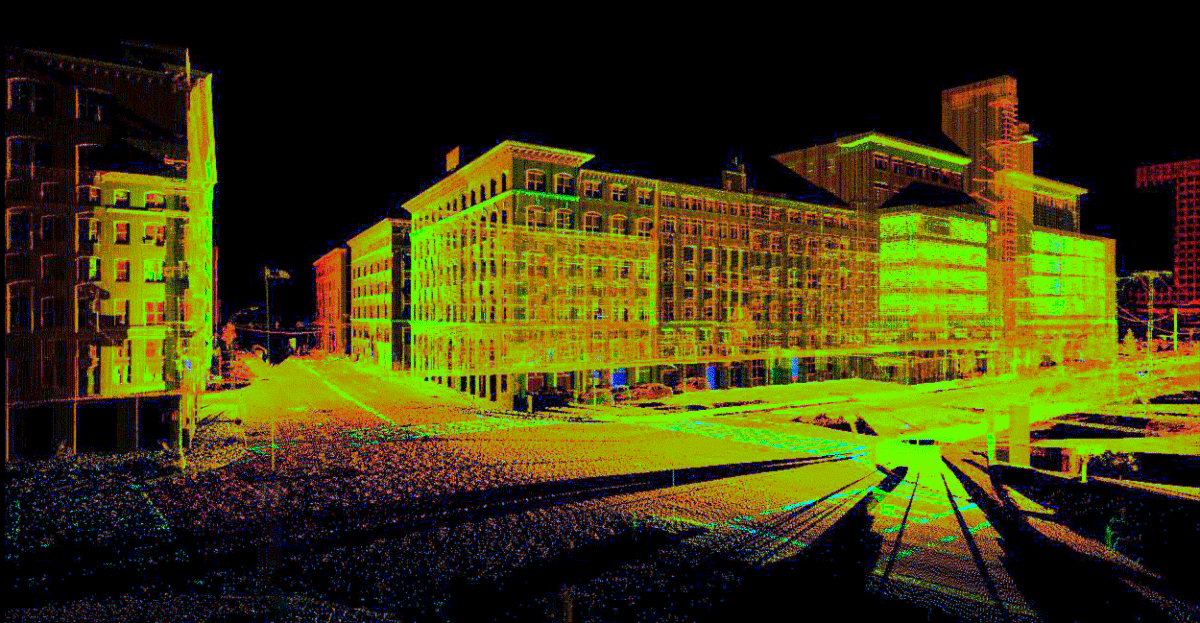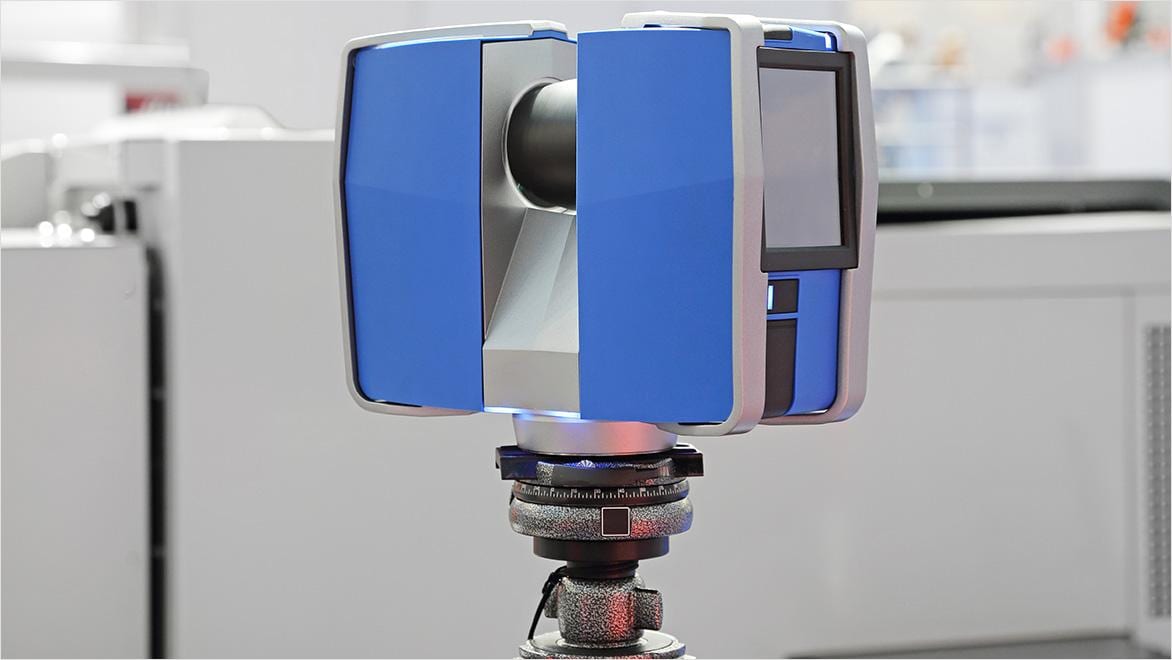Innovative Approaches to Use 3D Scanning in Architectural Creativity
Wiki Article
Enhancing Manufacturing Processes: The Effect of 3D Laser Scanning on High Quality Control
3D laser scanning modern technology is transforming quality assurance in manufacturing. By giving exact measurements and high-resolution information, it makes it possible for makers to determine discrepancies from specifications easily. This advancement not just enhances assessment procedures yet additionally improves operational efficiency. 3D Scanning. However, the execution of this technology comes with its very own collection of challenges. Checking out these aspects exposes the wider effects for industries and the future landscape of manufacturing
Comprehending 3D Laser Scanning Technology
Although 3D laser scanning modern technology has actually advanced considerably in the last few years, its basic principle continues to be simple: catching the exact geometry of items using laser light beams. This technology employs laser light to measure distances in between the scanner and numerous points on an object's surface area. The data accumulated is then refined to produce a detailed 3D design, precisely mirroring the dimensions and shapes of the scanned object.Typically, 3D laser scanners can be classified into 2 major types: get in touch with and non-contact scanners. Contact scanners physically touch the challenge collect dimensions, whereas non-contact scanners make use of laser light beams to catch data from a range. The flexibility of this innovation allows its application across different sectors, including architecture, production, and construction. Its capability to generate high-resolution models helps with quality control, reverse engineering, and rapid prototyping, eventually boosting layout accuracy and performance in manufacturing procedures.
Benefits of 3D Laser Scanning in Manufacturing
As manufacturers seek to boost effectiveness and precision in their procedures, the benefits of 3D laser scanning have ended up being significantly obvious. This innovative modern technology permits quick and highly accurate dimensions of complex geometries, considerably reducing the time required for high quality checks. By recording thorough information, producers can determine discrepancies early in the production process, thus reducing waste and rework prices.3D laser scanning promotes far better design validation, making it possible for engineers to compare as-built conditions with initial requirements. This ability ensures that any type of inconsistencies are without delay attended to, improving general item top quality. On top of that, the technology sustains the creation of electronic doubles, which can be made use of for simulations and procedure optimizations. Consequently, makers not only raise their functional efficiency but also improve their affordable advantage in the market. Overall, the assimilation of 3D laser scanning stands for a transformative action towards achieving higher standards in making quality control.
Integration of 3D Laser Scanning Into Top Quality Control
Incorporating 3D laser scanning right into top quality control processes boosts the precision and performance of assessments throughout production. This modern technology enables makers to catch in-depth, high-resolution data of settings up and components, permitting specific dimensions and comparisons versus style specifications. By employing 3D laser scanning, organizations can recognize inconsistencies from tolerances better, which is vital for maintaining item honesty.
Real-World Applications and Instance Research Studies
Real-world applications of 3D laser scanning in manufacturing show its transformative effect across various industries. Aerospace companies use this modern technology to perform precise examinations of components, guaranteeing they fulfill strict safety requirements. A significant situation included a leading aircraft maker that used 3D laser scanning to streamline its quality control procedures, considerably lowering evaluation times and errors.In the automotive field, makers have actually implemented laser scanning to produce electronic doubles of their automobiles, making it possible for real-time adjustments during production. One auto company reported a 30% reduction in rework expenses after integrating this innovation right into their production line.
In the consumer products market, firms are utilizing 3D laser scanning for quick prototyping, allowing for quicker versions and boosted product layouts. These applications illustrate how 3D laser scanning not only improves precision yet likewise improves effectiveness and development throughout multiple manufacturing domains.
Getting Over Obstacles in Application
Carrying out 3D laser scanning in making presents numerous challenges that organizations need to navigate to totally recognize its blog advantages. One significant difficulty is the preliminary cost of tools and software, which can hinder business from adopting this innovation. Additionally, incorporating 3D laser scanning into existing process needs getting over resistance to change among employees, necessitating comprehensive training programs to guarantee efficiency. Data monitoring likewise postures a difficulty, as the high volume of details generated by 3D scanning must be properly processed and examined to derive workable understandings. Compatibility issues with legacy systems may hinder smooth assimilation, requiring potential upgrades or adjustments. Dealing with these difficulties is vital for suppliers aiming to enhance top quality control and maximize production procedures. By creating clear methods for training, financial investment, and data administration, companies can minimize these challenges and launch the transformative possibility of 3D laser scanning in their procedures.Future Trends in 3D Laser Scanning for Manufacturing
As producing continues to develop, the integration of 3D laser scanning with raised automation is expected to transform production processes. Improved information analytics will play a vital function in enhancing process and boosting top quality control. These fads highlight the capacity for better efficiency and precision in making settings.
Increased Automation Combination
Although the integration of automation in production has actually been gradual, Get More Info the future of 3D laser scanning is poised to increase this fad significantly. As making procedures come to be significantly complicated, the need for precise, real-time measurements expands. 3D laser scanning modern technology supplies automated data capture, reducing labor costs and minimizing human error. This assimilation enables manufacturers to simplify top quality control procedures, allowing quick detection of discrepancies in production. Furthermore, the alignment of 3D laser scanning with robotics and automated systems helps with smooth operations, enhancing general effectiveness. As producers adopt these advanced modern technologies, they can expect improved precision and efficiency, placing themselves competitively in a rapidly progressing market. The harmony between automation and 3D laser scanning notes a substantial jump ahead in making technology.Boosted Information Analytics
The assimilation of automation has led the method for improvements in data analytics within the domain of 3D laser scanning. Suppliers are increasingly leveraging advanced formulas and artificial intelligence techniques to examine large datasets created by laser scans. This enhanced information analytics capability permits real-time surveillance of making procedures, enabling the identification of discrepancies and defects much more effectively than conventional approaches. Anticipating analytics can visualize potential problems, significantly lowering downtime and improving total performance. The capacity to envision information in three dimensions supplies deeper understandings into manufacturing workflows, fostering far better decision-making. As 3D laser scanning modern technology proceeds to develop, the role of data analytics will certainly become increasingly important in driving development and keeping competitive advantage in manufacturing.Frequently Asked Questions
What Industries Benefit one of the most From 3D Laser Scanning?
The sectors that profit most from 3D laser scanning include manufacturing, building and construction, aerospace, auto, and health care. These markets utilize the technology for precision dimensions, quality control, and efficient style procedures, substantially enhancing general functional performance.Just How Does 3D Laser Scanning Contrast to Typical Measurement Methods?
3D laser scanning offers higher precision and rate contrasted to standard measurement techniques. It records thorough geometries promptly, minimizing human error and facilitating better evaluation, which ultimately improves general quality assurance in various sectors.What Is the Price of Carrying Out 3D Laser Scanning Modern Technology?
The price of implementing 3D laser scanning technology differs substantially, typically ranging from $10,000 to $100,000, relying on tools, software, and training. Organizations needs to evaluate these costs against possible performance and quality enhancements.Are There Details Software Program Needs for 3D Laser Scanning?
Yes, 3D laser scanning needs certain software program, consisting of information handling and modeling applications. Usual selections encompass CAD software application, point cloud processing tools, and specialized applications that help with the combination and evaluation of checked data for suitable outcomes.For how long Does a Regular 3D Laser Scanning Refine Take?
A typical 3D laser scanning procedure can take anywhere from a couple of mins to numerous hours, depending upon elements like the size of the item, complexity of the environment, and needed degree of information for precision.3D laser scanning modern technology is transforming quality control in manufacturing. 3D laser scanning modern technology has advanced considerably in recent years, its basic Learn More concept stays straightforward: recording the accurate geometry of items utilizing laser beams. Incorporating 3D laser scanning right into high quality control processes enhances the precision and efficiency of evaluations throughout production (3D Scanning). 3D laser scanning innovation uses automated data capture, reducing labor prices and decreasing human error. The price of implementing 3D laser scanning modern technology differs considerably, normally varying from $10,000 to $100,000, depending on training, equipment, and software
Report this wiki page